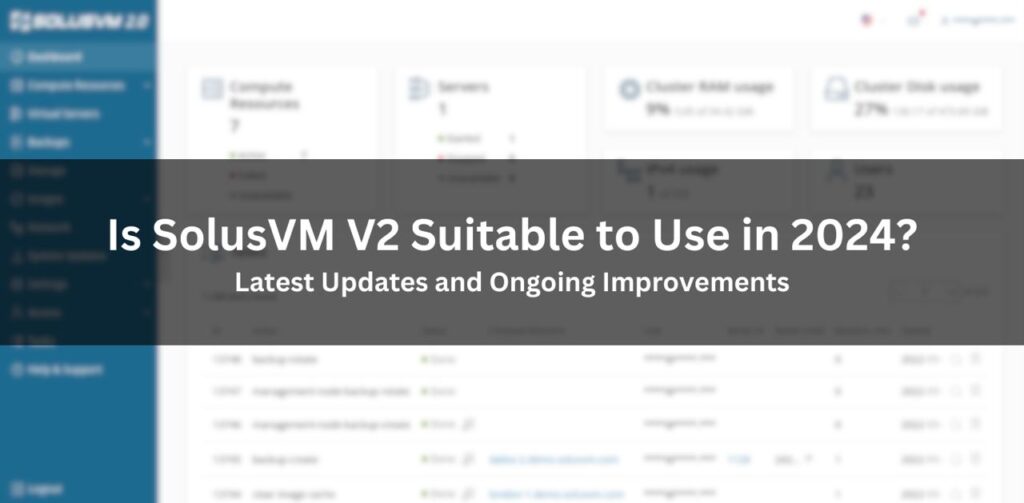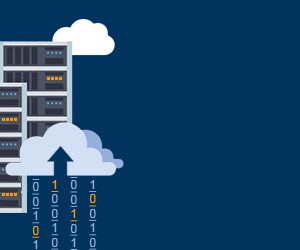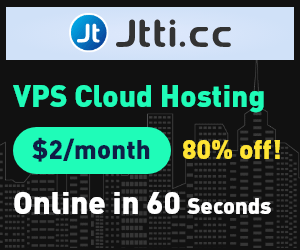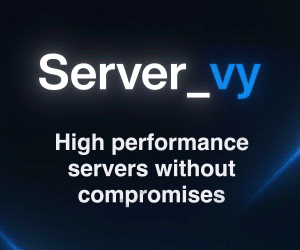
This article was contributed by Dustin B. Cisneros from RackNerd, a seasoned contributor of the hosting industry for 16+ years. RackNerd has also been consistently voted, year over year as a top provider within the LowEndBox/LowEndTalk community and, most recently, has been recognized among fastest-growing companies in 2024 Inc. 5000 Regionals Pacific List. Are you looking for a new VPS? Be sure to take a look at their latest promotions by clicking here!
Back in our initial review of SolusVM 2.0 in late 2022, we at RackNerd felt that SolusVM V2 was not capable of handling production environments. Since then, they have fixed those concerns and implemented many fixes to the platform. As we reconsider and move towards this direction, we’ve continued to invest tons of resources/time, to ensure that a smooth transition of RackNerd’s scale could be considered. The GOOD NEWS is that SolusVM’s team has been very receptive to feedback, and SolusVM V2 as of today is definitely much better than it was in its earlier days. While our previous article highlighted several concerns that are now addressed, we wanted to share the latest update as of today (June 2024), with an update on the progress made and their ongoing efforts to enhance the upgraded platform.
At RackNerd, we’ve been working closely with the SolusVM development team, maintaining direct communication with their development team, and we’ve also had several private meetings with their management team. This level of collaboration has given us a unique insight into the platform’s evolution and future direction. Based on these interactions and the progress we’ve witnessed, we have a positive sense of hope for SolusVM V2’s potential to meet the needs of providers of all sizes in the near future.
Recently, we’ve submitted a substantial list of bugs, improvements, and feature requests, which the SolusVM team has acknowledged and created cases for. Some of these include:
- SIO-6127 – User Area in Mobile View doesn’t display text on the menu navigation
- SIO-6126 – “Delete” and “Create” buttons for a virtual server appearing in UI even a user doesn’t have such permission
- SIO-6125 – Customize locale text wording like English.lang.txt in v1
- SIO-6124 – Maintenance Mode functionality for Compute Resource
- SIO-6121 – Basic auth support for admin area
- SIO-6119 – Make SolusVM Licensing work when a management node is behind Cloudflare
- SIO-6134 – Restore original visitor IPs when a management node is behind Cloudflare
- SIO-6118 – Show Compute Resource name in User Area
- SIO-6117 – Research “Graphs” feature maximum cluster capacity
- SIO-6116 – Change virtual server password (root/Administrator) on Reinstall
- SIO-6115 – Hide the “Disk” tab in the User Area
- SIO-6112 – Hide the “Default” project in the User Area
- SIO-6111 – Auto suspend the VM if virtual server has reached the traffic limit
- SIO-6030 – PHP limit on Cloudflare affects SolusVM 2 UI experience
- SIO-5995 – Add an option to power off/on the VM after offline migration
- SIO-6139 – Disable storage types entirely in the cluster
- SIO-6141 – Show the progress of Guest Tools installation into a virtual server
- SIO-6142 – Show Uptime and Load Average data for a Compute Resource
- SIO-6143 – Show new server password after reset within the page itself instead of a pop up in WHMCS module
- SIO-6144 – Allow accept non-FQDN hostname on a new virtual server creation.
- SIO-6138 – Although controls are limited for a suspended vm (cannot start/stop/reboot), when a user reinstalls a Suspended VPS, it will automatically come back online and turns the VPS back on after the OS reinstall.
You can keep an eye on the SolusVM V2 release notes to watch these changes become implemented in the coming days/weeks.
Additionally, we’ve been collaborating with the SolusVM team to refine the import tool from V1 to V2. We’ve suggested a more efficient approach for handling imported VPS servers in WHMCS, as we believe the previous available methods were not efficient, and could get quite unorganized at scale. We instead suggested creating a single product for imported VMs, while using custom fields to automatically detect and populate a VM’s respective resource specifications. This method should prove more effective than creating duplicate products, especially for larger web hosting providers.
Having been an established VPS provider for quite some time, at RackNerd, we believe that we have a solid understanding of what both end-users and providers need from a VPS control panel solution. We appreciate that the SolusVM Development Team has been receptive to feedback and is actively working on improving their product. We believe that our feedback, in addition to their team being responsive/interested in improving the product further, should benefit the entire SolusVM ecosystem, enhancing the experience for both end-users and providers.
We encourage other providers and users of SolusVM V2 to also contribute their feedback, whether it’s reporting small bugs or suggesting major improvements. Given that many LEB/LET providers utilize the SolusVM VPS Control Panel, this collective input can help shape the product to better serve the community’s needs.
While there’s still work to be done, the progress made so far and the open channel for feedback are positive signs for the future of SolusVM V2. We’ll continue to work with the SolusVM team and keep the community updated on significant developments.
So to answer the question of “Is SolusVM V2 Suitable to Use in 2024?” or “SolusVM V2 Review?” – the answer is both yes and no, depending on each provider’s specific use case and requirements. In our opinion, SolusVM V2 is certainly headed in the right direction, with significant resources being invested into improving the platform, which is commendable. However, for larger hosting providers like ourselves, it’s not quite there yet, though we’re hopeful it may be ready later this year. The platform is undoubtedly making progress. On our end, we’ll be initiating a public beta test of the platform (exclusively for the LEB/LET community, with unpaid “FREE” services) soon – so stay tuned for updates on that front.
In the meantime, if you are a hosting provider yourself, or if you are looking to virtualize your bare metal server, check out our video on YouTube below, which goes over how to install SolusVM V2:
Related Posts:
- Snapshots vs Backups Explained, And Why You Need Both in Your Life - June 27, 2024
- Here Comes the Rain Again: Jump On These Pre-Monsoon Offers from The Venus Host! - June 26, 2024
- A Fun Scenario for Your Virtual AI Girlfriends - June 25, 2024





















Leave a Reply